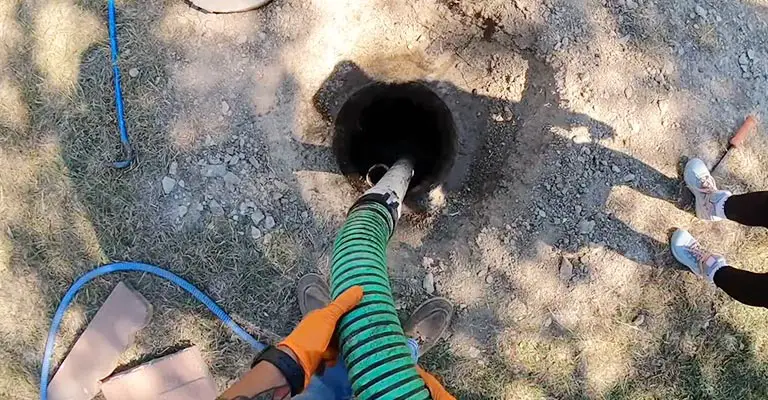A well-functioning septic system is crucial for maintaining the hygiene and sanitation of a home.
One of the key components of this system is the septic tank drain pipe, which carries wastewater away from your household plumbing and into the septic tank for treatment.
However, over time, these drain pipes can become clogged due to various factors such as grease buildup, solid waste accumulation, or tree roots infiltrating the pipes.
When this happens, it can lead to unpleasant odors, slow drainage, and even potential septic system backups.
To prevent these issues and keep your septic system running smoothly, it’s essential to know how to unclog a septic tank drain pipe.
Why Do Septic Tanks Clog?
Due to the smaller pipes and restricted reservoirs, septic systems are more likely to clog than municipal wastewater systems. There can be a learning curve involved for homeowners unfamiliar with septic lines.
One of the biggest rules when it comes to using a septic system is that you should only flush human waste and toilet paper down the drain.
Garbage disposals should be avoided even in the kitchen, so dispose of leftovers in the trash instead.
According to the Environmental Protection Agency (EPA), your septic tank should be pumped every two to five years, depending on its capacity and household demands.
To avoid unnecessary problems, you should pump your tank before it is full.
Safety Considerations
Unclogging a drain may require you to open the lid of your septic tank in order to access it. Be sure to follow safety guidelines while doing so. It is possible to become lightheaded or even unconscious from fumes released by septic tanks.
It is recommended that you wear a gas mask and do not lean over or attempt to climb into the tank. Having a partner helps you look out for one another.
When trying to clear a clogged septic line, wear gloves and clothes to keep you protected. It is recommended that you thoroughly sanitize all tools you use with bleach after each use.
Unclogging a Drain with Septic System:
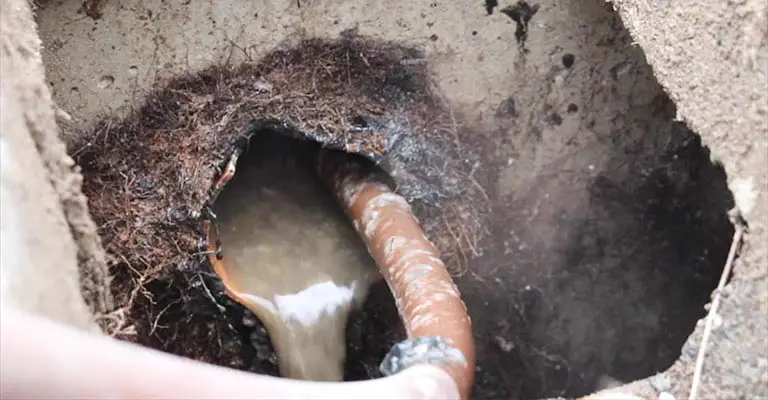
To clear the drain, you will need to pour 1/3 cup of baking soda into it, followed by 1/3 cup of vinegar. Before putting them down the drain, you can mix them together. Pour hot water on the solution after it has worked for an hour.
This is just one method of unclogging a drain with a septic system. This DIY step-by-step guide will help you fix a clogged mainline if you have household plumbing experience and knowledge.
Common Symptoms Of Clogged Mainline
If you’re trying to unclog a clogged septic tank drain, you’ll have to identify where the clog is located.
Clogs are normal in a septic tank, since it holds the waste and toilet paper flushed from your home and into the drain field.
You may find that there are clogs or even damages in the pipe that connects your house to the septic system. In order to identify a clogged mainline, you should look for the following symptoms:
- Toilets and drains make gurgling noises
- Sinks and bathtubs drain slowly
- Drains emit a foul smell or odor
There are identifiers on the main drain that help homeowners determine whether a problem exists.
There are ways to resolve the clog without using professional help once it’s been identified that the problem is with the main drain, and not the draining system or septic tank.
Step 1: Use A Natural, Nonchemical Drain Cleaner:
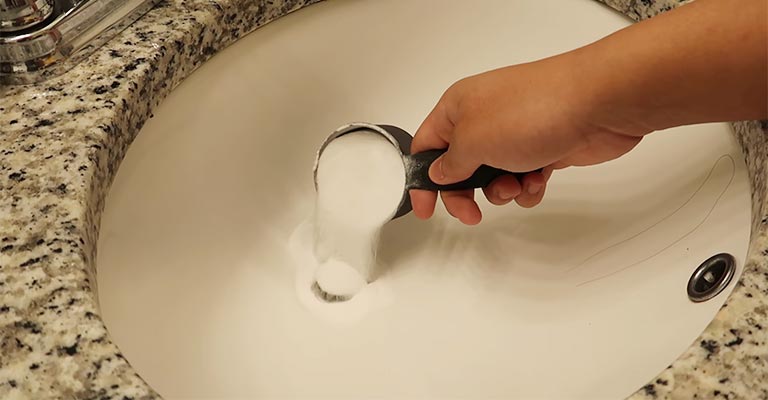
Drain cleaners that contain chemical ingredients should never be poured down the drain. Use natural resources like baking soda and vinegar.
By using baking soda, the clog will be dislodged, and by using vinegar, the drain will be refreshed and grease will be eliminated.
To clear the drain, you will need to pour 1/3 cup of baking soda into it, followed by 1/3 cup of vinegar. Before dumping them down the drain, you can mix them together. After an hour, pour hot water on the solution.
Step 2: Fill The Main Drain With Hot Water
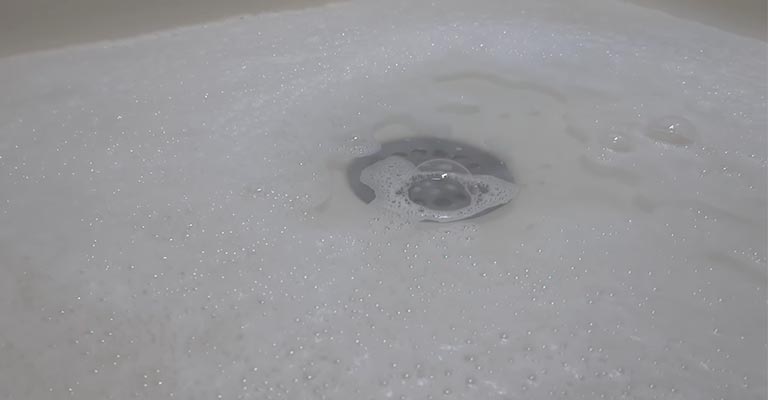
Adding hot water to the solution will speed up its movement and loosen any obstructing particles that may be present inside the drain. The more hot water you pour into the drain, the better.
Step 3: Use A Drain Snake And A Plumbing Auger
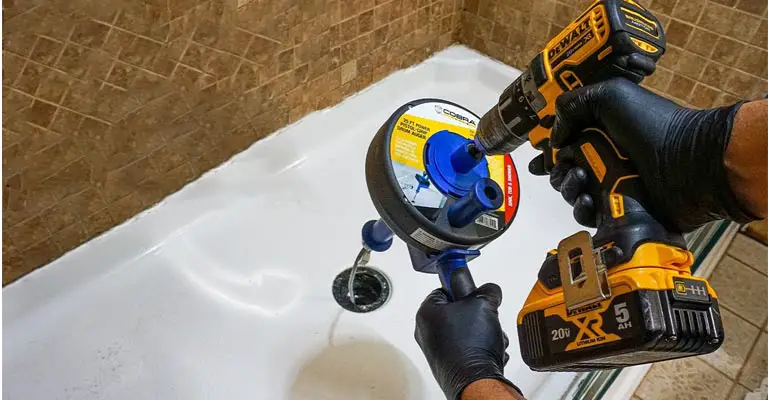
A plumbing auger can clean clogged pipes effectively by rotating a tool down your main drain nearly 80 meters.
By inserting the drain snake into the drain until you feel an obstruction, you should be able to clear it. Use the auger to rotate and clear the clog once it has been located.
Step 4: Contact A Professional Plumber When Necessary

Most homeowners will not be able to fix a clogged main drain themselves, especially if they have a septic system.
Be aware of your limitations and capabilities regarding DIY unclogging and call in the professionals when necessary.
Having your main drain unclogged by a sewer and septic service ensures a clear drain all the way to your septic tank.
Other Ways Of Unclogging a Drain With a Septic System
Consider the case of a homeowner with a septic tank. When removing blockages from a septic system, other considerations may need to be taken into account.
Keeping your septic tank pumped and solid waste out of your septic tank is vital to avoiding backups that cause damage to your septic tank and pumping.
To unclog a septic drain, here are some DIY methods before calling a professional.
1. Try To Physically Remove What’s Causing The Problem
A pop-up strainer or stopper can clog because of hair collected there. You might be able to clear the drain clog by cleaning the drain and removing the hair.
Alternatively, if you have hair in the P-trap or S-trap, you can use a drain stick to clear the clog.
You can remove clogs in your sink trap by cleaning it out, using a plunger to clear clogs that don’t penetrate too far into the pipe, or using a plumbing snake to clear clogs that are deep in the pipe.
2. It’s Possible to Break Up Stubborn Clogs With Chemical Drain Cleaners
Make sure you choose a product that is suitable for your septic system and your pipe type. When using drain cleaners in septic systems, make sure the chemicals are safe for them.
Avoid using chemical cleaners such as bleach without researching first. When used improperly, chemicals can ruin your plumbing system and other areas.
Whenever you’re unsure whether a chemical drain cleaner is safe, just keep in mind that you should never mix drain cleaners, and that drain opening tools shouldn’t be used after using a chemical drain cleaner.
Keep drain cleaners away from finished fixtures like faucets, stoppers, and drain trims due to their harsh chemicals and potential chemical reactions.
3. Natural drain cleaners are a less toxic alternative
Natural drain cleaners, which use enzymes or other septic-safe formulations, are not only gentler on your pipes and features, but they have a lower environmental impact than chemical drain cleaners.
4. Drain Cleaner You Can Make Yourself
Fill your drain with half a cup of baking soda, ensuring it all goes down. Cover the drain with a stopper or rag immediately after pouring half a cup of white vinegar down it.
After 2 minutes, pour another half cup of vinegar into the drain, stopping it again with a rag or stopper. Pour a gallon of boiling water down the drain after waiting 15-30 minutes. In case of stubborn clogs, you might have to repeat the procedure.
5. Dish Soap and Hot Water
If grease is causing the clog, this is especially helpful. Put some soap in the drain, and then boil some water afterward.
6. Hydrogen Peroxide
Pour one tablespoon of baking soda into a cup of hydrogen peroxide and pour it down the drain. When it foams, the chemical reaction takes place, and it will clear drain clogs in sinks, showers, kitchens, and more.
7. Prevention Is The Best Cure
Coffee grounds, grease, and anything else that can clump or solidify shouldn’t be poured down a sink or drain. Ensure that you flush down food particles with cold water if you use a garbage disposal.
Consider applying a treatment that reduces corrosion and buildup in pipes by frequently cleaning pop-up stoppers and strainers. By doing this, you will prevent slow drains, gurgling, and the need for a plumber’s snake/auger.
Choosing Between DIY Vs. Professional Septic Clog Repair
In addition to the fact that the job is often unpleasant, hiring a professional septic company for help clearing a clogged septic pipe makes sense.
Septic systems can be messy to work with, even if you are wearing the appropriate protective equipment. It’s understandable if you’d rather not handle the task yourself, even if it seems straightforward.
Final Words
It is impossible to find the best way to clear a clogged drain. Because clogged drains can be caused by many things. One of the most crucial systems in your home is your plumbing system.
Taking care of your plumbing should be the top priority, whether you use drain cleaning tips or hire a professional plumber to handle all your plumbing requirements.

